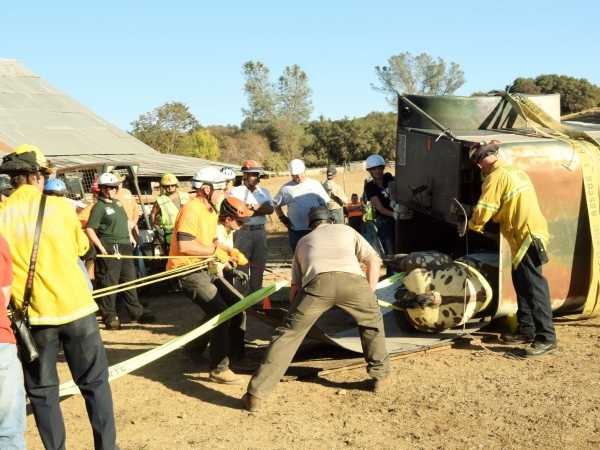
Force Vector: A force vector is a representation of a force that has both magnitude and direction.
So what does that mean to technical rescuers?
Vector forces are physical elements that rescuers need to understand. The proper use of vectoring can be extremely beneficial, multiplying the amount of force that rescuers can manually provide. Conversely, in other circumstances vector forces can be an impediment to operations or create safety issues.
Using a taught line as an example, a person pulling on the middle of the line can actually generate a pulling force that is several times that person's pulling strength. However the amount of multiplication generated is dependent upon how straight the rope is when being pulled.
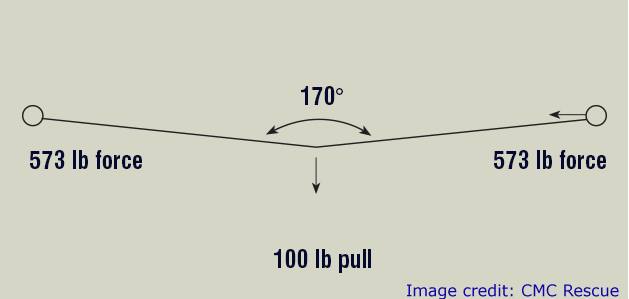
As the rope is pulled and its angle becomes more narrow, the multiplication factor decreases and can actually become negative. At 120 degrees the force applied evens out. As the angle narrows further, the force applied to the load actually becomes less than the force of the pull.
A "bird's eye" view. The 100 kg "weight" in this chart would be the person actually side-pulling the rope.
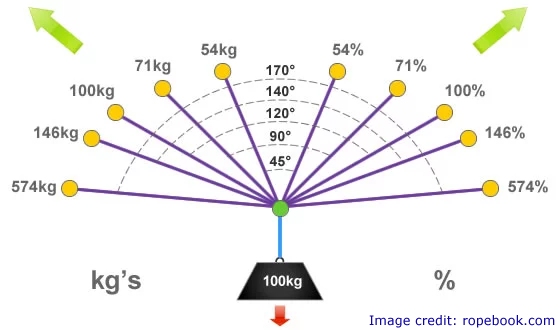
Understanding these principles can have a significant impact on rescue safety and efficiency.
ANCHOR POINTS
In dealing with anchor points, it can be important to understand the effect we have when applying loads. For example, when utilizing two points for an anchor, we need to reduce, not increase the loads applied to those points. Using the real-life example below, the webbing used here as an anchor point has an angle of less than 90 degrees at the point of the load, reducing the forces where the webbing attaches to the trailer to about 70 percent.
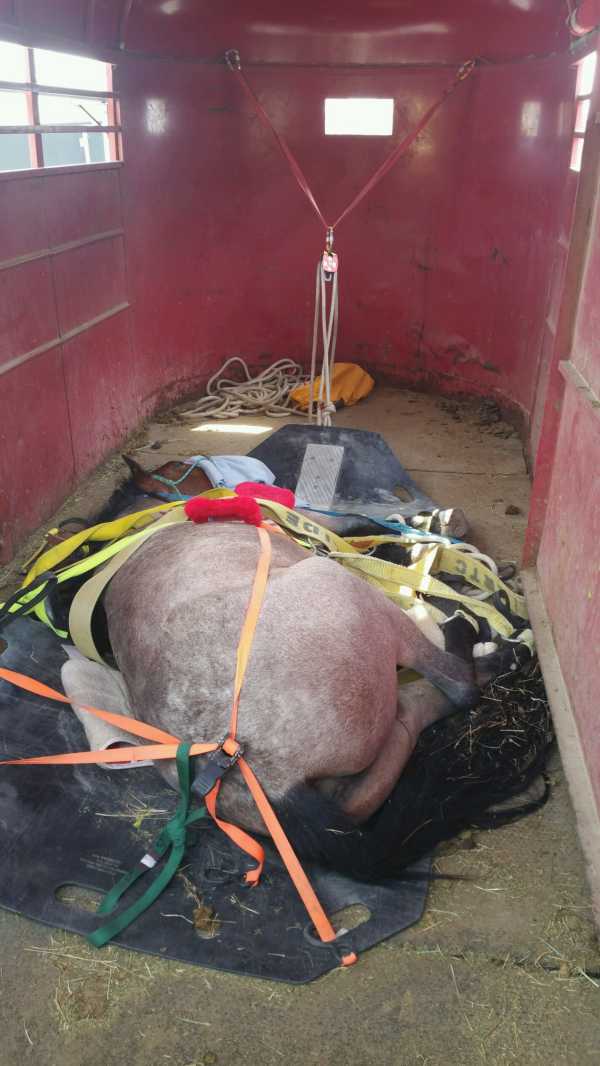
In summation, when creating an anchor by attaching to two points, or when using a large object as the anchor, the angle where the load is attached should be as narrow as possible.
FORCE VECTORS AND MECHANICAL ADVANTAGE
During extrication operations, understanding how to use force vectors can be advantageous. Even with the application of Z-rigs, the movement of a load may become "sticky" and additional force may be needed. Producing a mechanical advantage by initiating a side-pull can often solve the problem.
One person "side-pulling" the recovery line is sufficient to pull this mare farther away from the bog.
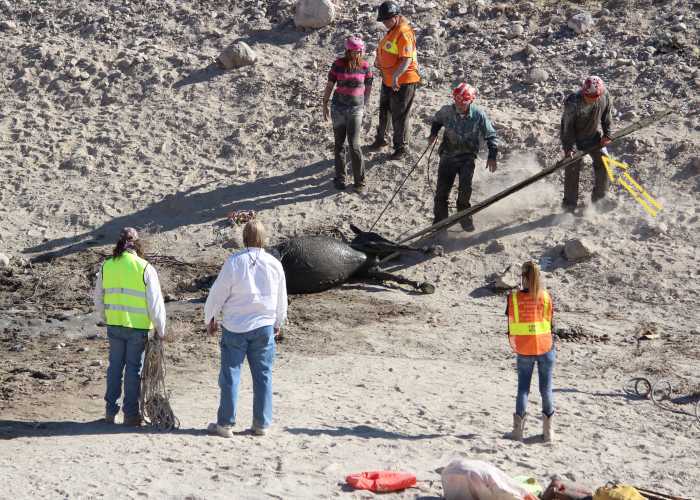
Establishing a taught line and applying a side-pull can be sufficient to move an animal a short distance and take less time that setting up a full-on Z-rig.
A simple force multiplier may be all that is needed to extricate this horse.
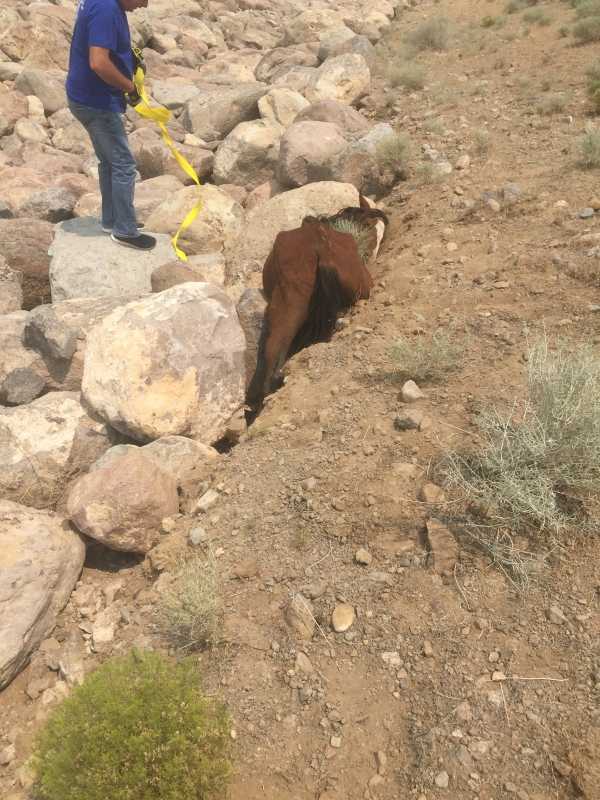
Vectoring can be used to more cautiously apply pressure and release when easing an animal out of a confined space.
Vectoring to ease the subject out and also to help keep it centered.

Vectoring can be extremely valuable during tricky extrications, especially when forces need to be applied temporarily in order to pry stuck limbs free, but the pulls must be able to be "adjusted" real-time.
Sometimes repositioning a trapped animal can be a delicate issue.
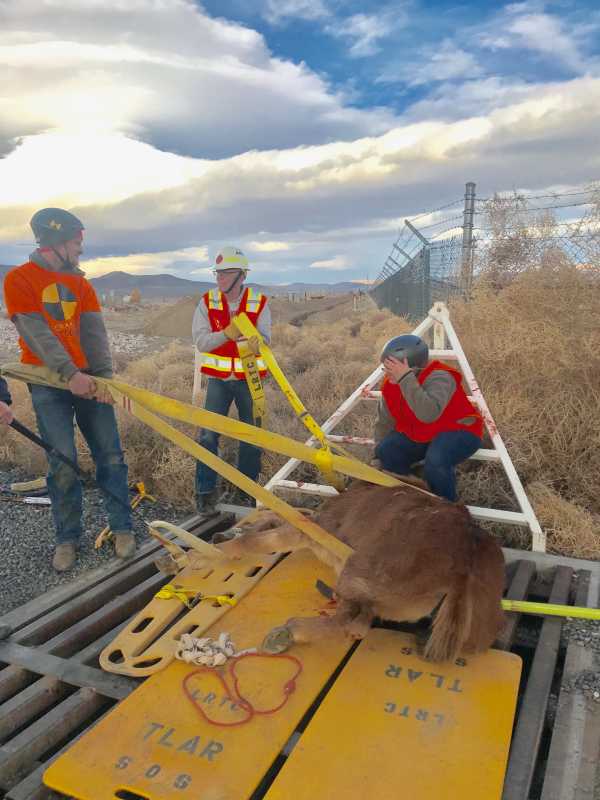
Vectoring can also be useful in redirecting loads around difficult objects and keeping ropes from dragging against sharp rocks and other hazards.
Preventing damage to the haul line.
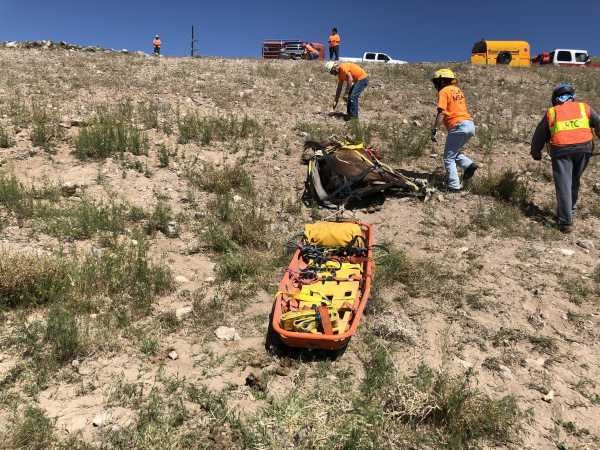
KEY POINTS
- Remember the effects that angles have on vector forces.
- When using two points for an anchor, maintain as narrow an angle as is practicable.
- Always safety check anchor points and attachments at the load. A failure at either end will likely result in the rescuers who are applying the side-pull falling over backwards!
- When using side-pulls to generate force vectors, always coordinate the operation with others on the haul team.
- When using side-pulls to raise loads, always have some form of progress capture device or secondary line to prevent the load from dropping when the line is reset for the next side-pull.
- When vectoring a Z-rig, always make sure you are vectoring the load line. Don't grab all the ropes since the working parts of the Z-rig will move during a side-pull operation.
- Vectoring gives the rescuer the ability to better sense whether the haul is working properly or may be getting "stuck." Always consider the "feel" when side-pulling.
- As in any operation, safety is the first priority. If something doesn't look or feel right, stop, assess, and make needed corrections before continuing.
| 










